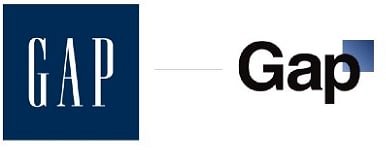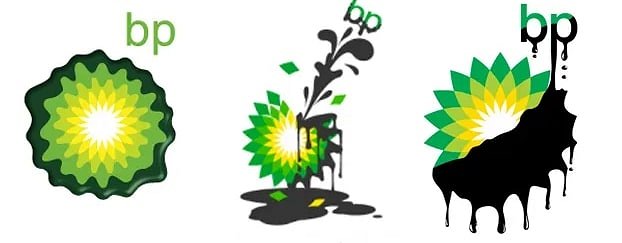How Much is Bad Branding Costing You?
Taking shortcuts on your brand identity isn't just lazy; it can diminish your bottom line as well.

Whether you’re running your own business, or an executive playing an integral part of a huge operation, there’s only so much time in the day. From ensuring the books add up, to keeping daily operations humming along, to securing cash flow for your business in the long term, prioritization is key, but this means some things will get pushed off until tomorrow. And the next day. And the next day.
For business owners and the C-suite alike, one of the most common ‘I’ll worry about that tomorrow’ aspects of any organization is design. It’s tempting to think that whatever design, branding, or marketing you came up with in a few hours will get the job done, so you don’t have to think about it for years. But what if your bad branding was actually costing you money? Or actively harming all of the hard work you’re putting into the other facets of your business or job?
Bad design can act like an invisible anchor, holding your business back in ways that are difficult to perceive, but more than apparent on the bottom line. So can you recognize and quantify the cost of bad branding or design? We’re going to look at how you can estimate what bad branding is costing your company, and where you can turn to prevent this hidden harm in the future.
What Does Bad Branding Look Like?
Before we can solve bad branding, we need to be able to identify it. To help get an idea of this, we’re going to examine a few classic examples of branding projects gone wrong, and the cost and embarrassment that this can cause.
- Gap: When one of the clothing industry’s most iconic brands underwent a full rebrand in 2010, Gap learned the fast and hard way that change isn’t always good. The new logo was roundly criticized, both by Gap fans and the design community (the logo was crowdsourced, rather than part of a professional agency project). Within a week, the controversy led Gap to return to their old logo, leaving them with nothing more than an estimated $100M cost for the trainwreck.

- BP: The BP logo is an example of how bad branding and bad PR can combine into an especially nasty problem for your company. After the Deepwater Horizon spill in the Gulf of Mexico in 2010, designers from around the world came together to parody BP’s sunburst logo, adding insult to the nightmare situation BP was already facing. While this type of parody shouldn’t necessarily be your first thought on a branding project, it’s a good idea to at least consider if there’s an obvious joke that can be made at your brand’s expense.

- Bad Translation: While logos are the first thing that pops into most people’s minds regarding branding, it’s important not to forget about your writing/content too. Taglines and brand names often involve wordplay, and this can lose something in translation, or worse, become something awful. Whether it’s Coca-Cola being translated as "Bite The Wax Tadpole" in China, a Colgate toothpaste called ‘Cue,’ sharing the name of a French adult magazine, or Coors slogan ‘Turn It Loose’ becoming a colloquial Spanish phrase for having bowel trouble, you always need to keep an eye on the translation of your brand name, slogan, or marketing materials.
Quantifying Your Branding
Now that we’re thinking about branding from a design perspective, let’s pair it with the process that truly separates the winners and losers in business: quantification. Tracking, analyzing, and acting on data is more important than ever, and just because design seems intangible, doesn’t mean that there aren’t techniques for translating it into numbers.
- Estimating Design ROI: Imagine being able to calculate the ROI on your design or branding, in the same way you could with a new product or factory. Actually, this isn’t nearly as far-fetched as you’d think. By recognizing the relationships between your branding/design and profit centers, you can begin to get an idea of how your rebranding project is affecting sales, or how a new marketing campaign is increasing sales conversions. Doing so will help you find a sweet spot on design spending, where branding is making you as much money as possible, without becoming a drain on profits.
- A/B Testing: Another way to ensure that your branding is optimized for customer success is through A/B testing. This brings the elements of science into the design world, by subtly varying the design elements of two pieces used for the same purpose, say a Facebook ad, in order to discover what is resonating most with your target audience. Whether for your social media, marketing, content, or even logo variations, A/B testing is a great way to take the element of chance out of your branding, by relying on real-world feedback, rather than detached hypotheses.
- Customer Feedback: Finally, as with the Gap example above, it’s vital to always listen to customer feedback. If you can understand why people like your brand or design, you can also figure out why other people don’t. While getting good feedback from customers can sometimes be like pulling teeth, there are a wealth of ways to do so, and this feedback can go far beyond your branding and design, to bolster your other business functions.
Why There’s Always Hope
For most business people, the art and strategy behind design and branding can be difficult to grasp, especially in a larger financial or operational context. However, if you’re a successful businessperson, you know the importance and power of delegation. Just because you’re not creatively minded, doesn’t mean that there isn’t an army of experts able to fill in your blind spots. Vrrb works with all kinds of businesses to frame and package the passion behind the business into brands that actively drive sales and customer engagement. Could your organization benefit from better branding (and who couldn’t!)? Or maybe you need a brand audit to judge your brand’s current effectiveness? When you're ready, we're here to help!